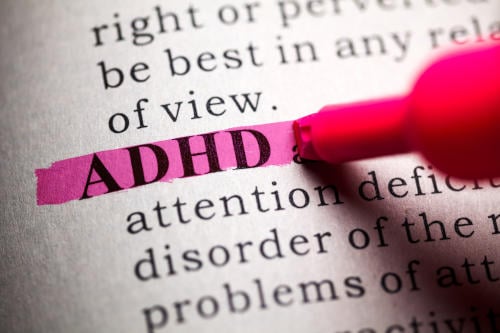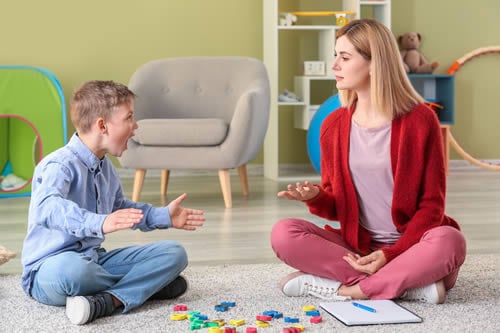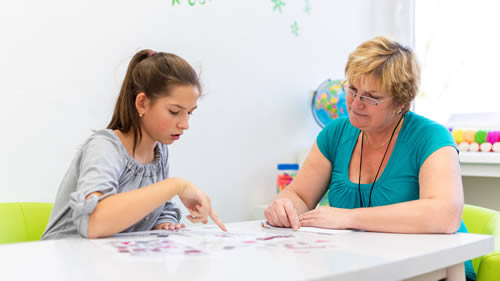How would you define ADHD (Attention Deficit Hyperactivity Disorder)? Many still think of a child with excessive energy. A child who can’t concentrate or disrupts their class. Yet this misses so many aspects of the condition. In this blog, we explore some of the hidden challenges that can arise for people with ADHD and cover a range of ways to support children who have this learning difference.
ADHD has many layers and varies greatly between individuals. As with many forms of neurodivergence, some of the challenges are camouflaged because observers don’t always know what to look out for.
What is ADHD?

ADHD is a neurodevelopmental condition characterised by persistent patterns of inattention, hyperactivity and/or impulsivity, wherein these functional differences negatively impact either the individual’s quality of life, the lives of the people around them, or both.
ADHD attributes may not be apparent at first, but as the child develops, they can present with specific differences when compared to other children, such as executive functioning challenges.
ADHD is not just a way to define a child with excess energy or an inability to sit still, but a SEND (Special Educational Need and Disability) which significantly impacts how the brain functions.
ADHD can impact organisational skills, time management, socialisation, academic results, working memory, communication, and emotional regulation – so there’s a lot more to it than the stereotype of a hyperactive child in a classroom.
Finding out what Lies Beneath the Surface “Like an iceberg, the majority of ADHD impact lies hidden beneath the surface, influencing thoughts, emotions, and behaviours.” https://suzycarbrey.com/adhd-hidden-challenges/
SENsational Tutor Shona, spends several hours a day with Leo, 16, who has ADHD. Her acute observations illustrate the notion that what we see in most ADHD children only scratches the surface: “There are many sides to ADHD. People tend to just see the impulsivity, but so much else goes on. What we actually see is only a small part of the condition.”
ADHD and Emotions

As a result of executive functioning differences, people with ADHD can experience something called rejection sensitivity dysphoria (RSD). The part of the brain which helps with planning, motivation and focus also helps us to regulate our emotions and control our reactions. In a person with ADHD, this area may not respond as strongly to calm the person down following a perceived threat. This means the danger can still feel immediate and very overwhelming even after it has passed.
Someone with ADHD might find it difficult to control their emotions because their neurobiology is working against them. This can result in unpredictable or impulsive behaviour, such as delight, fury, anxiety, or sadness. The emotions are often intense, and it can be very difficult for someone with ADHD to control their behaviour when they are emotionally dysregulated.
Shona explains, “Whilst many notice noise, behaviour, chatter or repetitive behaviours, few see that children with ADHD are often suffering with anxiety or low self-esteem.”
“Leo struggles with maths and this makes him feel incredibly insecure; he can be very self-deprecating. Also, due to his impulsivity, sometimes he is unable to focus on a modified version of a task; he just doesn’t have the patience for it! When he can’t focus, he can’t acquire the knowledge, and therefore his insecurities deepen.”
Children with ADHD tend to be hypersensitive to how others perceive them. Contrary to the stereotype that ADHD children are always loud and chatty, they may deeply fear rejection or social situations as a result of RSD.
Due to low self-esteem, children like Leo may seek reassurance or even continuous validation that they are getting things right. “Leo will often ask me if he is doing ok”, explains Shona, “he wants regular confirmation that he is on the right track”.
It can be easy for neurotypical people to forget the extra hurdles ADHD children face. It’s hard to imagine how someone else’s mind works, which can be a barrier to empathy.
ADHD children may respond by trying to mask their symptoms, or by mirroring the behaviour of others. They do this in an effort to fit in. This can result in ADHD children leading inauthentic lives and internalising shame due to learning that it isn’t ok to be themselves.
How Can We Help ADHD Children?

Shona has noted that ADHD children like Leo are most receptive to conversations when they feel safe i.e they are not emotionally dysregulated: “This would be a good time to gently talk to him, maybe about his behaviour, what he could have done differently, or the idea of presenting a task in a modified format.”
Below are a few more strategies that Shona has found helpful:
Clear briefs before a task starts
When Leo is regulated at the start of a lesson, Shona often takes the opportunity to give Leo a clear brief. This provides clarity around her expectations, reducing Leo’s fears around making mistakes. Leo is then more likely to be able to absorb key information and complete the task successfully.
Visual Cards
Visual cards remove the pressure to communicate verbally when Leo is processing difficult emotions such as anger or shame. He is still able to express his needs, but in a way that feels easier and safer.
Consistent Praise
Using praise as a tool, gently and regularly, has a cumulative effect on Leo’s self-esteem. The consistent boost can trigger the reward centre in the brain, as well as creating a sense of safety which can down-regulate the body’s threat response, alleviating some of the most negative emotional responses which can arise.
Practicing Empathy
While a child with ADHD is managing their condition, with all the challenges that they can experience, they have a fundamental need for empathy.
It may seem like a lot to ask. When someone with ADHD is behaving in a way we don’t understand, or which negatively impacts our lives, frustration can get the better of us. But these children desperately need acceptance and support rather than more rejection.
This does not mean ADHD children should live without consequences or discipline, just that by understanding the complexities of ADHD, we can guide their behaviour with more compassion.
Children with ADHD are not separate from society; they are part of our community.
If we can tap into the full extent of what might be happening for them, it will help us all connect with ADHD children, reassure them, and create a more inclusive environment for everyone.
Useful Websites:
https://adhdmentors.co.uk/living-with-adhd-the-hidden-battle-of-the-mind/
https://www.starlingminds.com/adhd-in-adulthood-the-hidden-struggles-and-untold-truths/
Please note: The information provided within this blog, by SENsational Tutors, is for general information purposes only. We appreciate that every person is unique, and any advice/experiences mentioned within the content of each blog may not be reflective of your own personal experience. All information on the site is provided in good faith and is for educational informational purposes only. It is not a substitute for professional advice. Before taking any actions based upon such information, we encourage you to consult with appropriate professionals.



